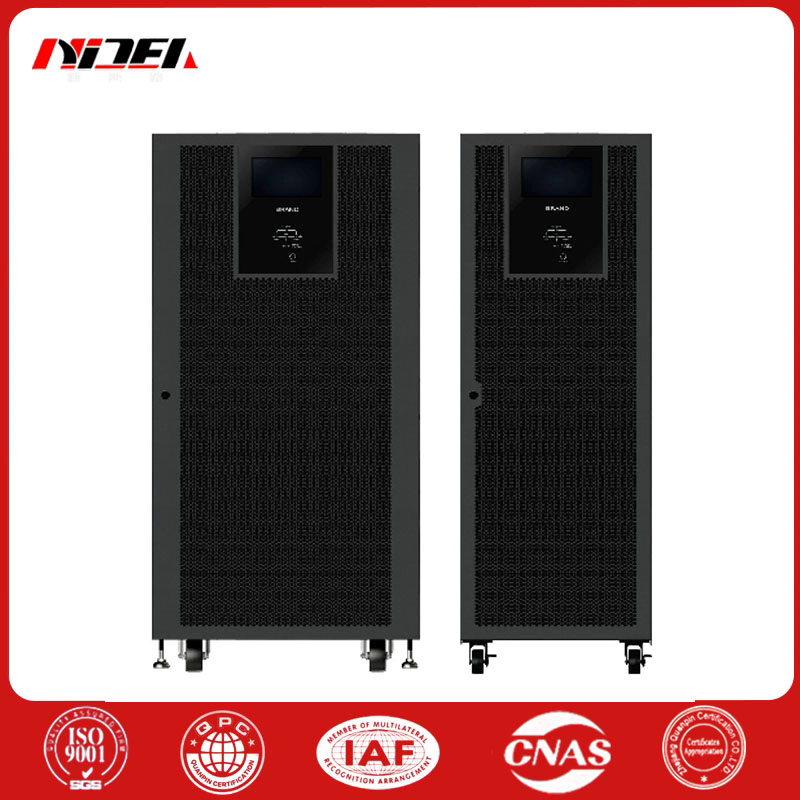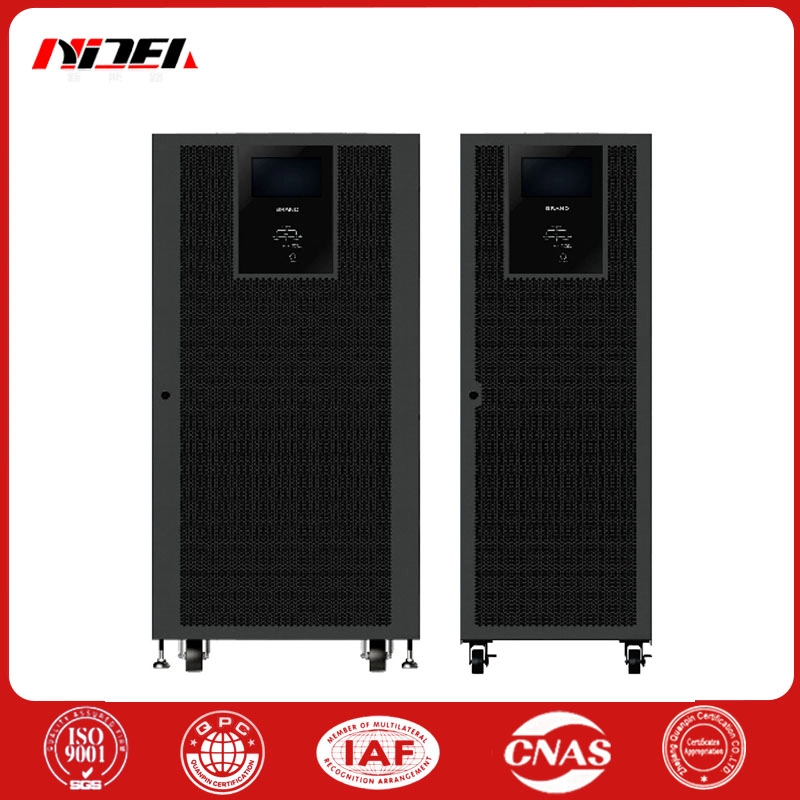Why Choose High Frequency Series UPS for Next-Level Power Protection?
The High Frequency Series UPS has become a critical backbone for businesses aiming to secure reliable, efficient, and continuous power. As digital infrastructure expands and downtime grows increasingly costly, organizations demand power solutions that combine superior performance, energy efficiency, and intelligent management.
A High Frequency Series UPS is an advanced uninterruptible power supply engineered with high-frequency switching technology. Instead of relying on bulky transformers, it uses high-frequency IGBT (Insulated Gate Bipolar Transistor) modules, allowing for smaller size, higher efficiency, and faster response. This technology supports sensitive equipment across data centers, industrial automation, medical systems, IT networks, and telecommunications.
The center purpose of this article is to help readers understand how these systems operate, what differentiates them from conventional UPS solutions, and how individual technical parameters impact reliability, energy savings, and business continuity.
What Are the Key Technical Parameters of the High Frequency Series UPS?
The following table summarizes the main specifications required to evaluate a modern High Frequency Series UPS. These values represent typical configuration standards used in professional applications.
High Frequency Series UPS Specifications
| Parameter | Description |
|---|---|
| Capacity Range | 1 kVA – 200 kVA |
| Topology | True Online Double Conversion |
| Input Voltage | 110/120/220/230/240 VAC (±20–25% depending on model) |
| Output Voltage | 208/220/230/240 VAC (Configurable) |
| Input Frequency | 40–70 Hz Auto Sensing |
| Output Frequency | 50/60 Hz ±0.1% |
| Power Factor | ≥0.9 to 1.0 (High PF models) |
| Efficiency | Up to 95–98% in Online Mode; Up to 99% in ECO |
| THDi (Input Harmonics) | <3% with PFC |
| Crest Factor | 3:1 |
| Waveform | Pure Sine Wave |
| Transfer Time | 0 ms |
| Battery Type | Sealed Lead-Acid or Lithium-ion |
| Communications | RS232 / USB / SNMP / Dry Contact |
| Cooling | Intelligent Forced Air Cooling |
| Protection Functions | Overload, Short Circuit, Over-temperature, Surge, Battery Overcharge |
These parameters enable the UPS to deliver stable and clean power for environments requiring high precision and continuity. The true double conversion design ensures consistent output regardless of input fluctuations—a requirement for mission-critical systems.
Why Do Businesses Prefer High Frequency Series UPS?
Businesses adopt High Frequency Series UPS systems for several key reasons:
Why high-frequency design matters
High-frequency conversion allows for:
-
Smaller physical footprint
-
Reduced heat generation
-
Higher efficiency and lower electricity consumption
-
Faster switching response
This results in improved operational stability and lower total cost of ownership.
Why true online double conversion remains the preferred topology
This topology continuously conditions power, ensuring that connected devices never experience spikes, sags, surges, or harmonic distortion. Unlike offline or line-interactive UPS systems, the High Frequency Series provides complete isolation from power disturbances.
Why high power factor increases equipment compatibility
Modern IT and industrial loads require UPS systems that can support higher active power output. A PF of 0.9–1.0 means more usable power compared to older UPS units with PF 0.7 or 0.8.
Why intelligent communication capabilities are essential
SNMP cards, monitoring software, and remote shutdown features allow IT teams to:
-
Monitor UPS status in real time
-
Plan maintenance
-
Receive alarms
-
Enable graceful server shutdown
This drastically reduces downtime risk.
How Does the High Frequency Series UPS Improve System Reliability?
How zero-transfer time protects critical equipment
Because the system always supplies power from the inverter, any transition to battery during an outage occurs with 0 milliseconds of interruption. Sensitive electronics—servers, medical imaging devices, automation controllers—remain protected.
How double conversion ensures clean output
The UPS converts AC to DC and back to AC, removing:
-
Voltage fluctuations
-
Frequency variation
-
Harmonic distortion
This protects devices from long-term degradation and extends operating life.
How battery management enhances resilience
Advanced battery management ensures:
-
Temperature-compensated charging
-
Optimized charge cycles
-
Overcharge and deep discharge protection
-
Extended battery lifespan
How overload and short-circuit protections secure equipment
Built-in safety mechanisms guarantee continuous protection under abnormal conditions, reducing damage during power events.
What Makes the High Frequency Series UPS Energy-Efficient?
High-frequency conversion for reduced loss
High-frequency IGBT switching significantly lowers heat production, improving energy conversion efficiency.
ECO Mode for maximum savings
In ECO mode, efficiency can reach up to 99%, ideal for loads that tolerate slight voltage variation. Businesses can save substantial operating costs, especially in large installations.
Lower operational temperatures
Less heat means:
-
Lower cooling costs
-
Longer component lifespan
-
Reduced risk of thermal shutdown
What Future Trends Will Shape High Frequency UPS Development?
Trend 1: Integration of lithium-ion battery technology
Lithium-ion packs allow:
-
Faster charging
-
Longer lifespan
-
Higher energy density
-
Smaller battery cabinets
Trend 2: AI-driven predictive maintenance
Advanced UPS systems are beginning to include analytics predicting:
-
Battery life expectancy
-
Component aging
-
Failure probabilities
This supports proactive maintenance planning.
Trend 3: Microgrid and renewable energy integration
Future UPS systems will increasingly support hybrid energy configurations, including:
-
Solar
-
Wind
-
Energy storage systems
This positions the UPS as part of a broader smart-power infrastructure.
Trend 4: Higher power density and modularity
Modular UPS systems allow:
-
Scalable expansion
-
Hot-swappable modules
-
Reduced maintenance downtime
Data centers and industrial systems are likely to adopt these designs rapidly.
How to Choose the Right High Frequency Series UPS?
Selecting the correct model requires analyzing the following factors:
Load requirements
Evaluate:
-
Total wattage
-
Power factor
-
Surge characteristics
-
Critical vs non-critical loads
Runtime expectations
Choose backup time based on operational needs:
-
Short autonomy for safe shutdown
-
Long autonomy for continued operation
Environment
Consider:
-
Temperature range
-
Dust level
-
Humidity
-
Ventilation
Redundancy
Options include:
-
N+1 configuration
-
Parallel architecture
Budget vs operational cost
Although high-frequency UPS systems may involve higher initial investment, long-term savings through efficiency and reduced cooling costs often justify the upgrade.
Common Questions About High Frequency Series UPS
Q1: What is the difference between a High Frequency UPS and a traditional transformer-based UPS?
A1: A High Frequency UPS uses IGBT switching instead of a heavy transformer, resulting in much higher efficiency, smaller size, lower noise, and better heat management. Transformer-based UPS units are larger and more durable for harsh industrial use, but high-frequency UPS systems provide superior performance for IT networks, telecommunications, and sensitive equipment requiring cleaner power.
Q2: How long does a High Frequency Series UPS typically run on battery?
A2: Runtime depends on configuration. A standard 1–10 kVA system usually offers 5–15 minutes of backup at full load, while extended battery modules can provide 30 minutes to several hours. Larger systems with external battery banks can support long-duration operations depending on battery capacity and load consumption.
How High Frequency Series UPS Enhances Applications Across Industries
Data centers
-
Protect servers and storage systems
-
Enable safe shutdown
-
Integrate with monitoring platforms
Healthcare
-
Provide clean power for imaging, diagnostic, and life-support equipment
-
Ensure reliability where failures are unacceptable
Industrial automation
-
Maintain operation of controllers, sensors, and robots
-
Prevent production line losses
Telecommunications
-
Stabilize critical communication networks
-
Provide uninterrupted service during power outages
Commercial buildings
-
Support elevators, lighting, security systems, and emergency equipment
Why the High Frequency Series UPS Represents the Future of Power Protection
High-frequency UPS systems combine compact design, superior efficiency, robust protection, and intelligent monitoring. As digital transformation increases across industries, these systems provide the foundation for reliable and resilient infrastructure.
The combination of pure sine wave output, true online double conversion, and high power factor ensures that devices receive the cleanest and most stable power available. At the same time, advanced communication interfaces and modular expandability make the system suitable for both present and future needs.
The High Frequency Series UPS delivers a sophisticated balance of stability, efficiency, and intelligent management. Its high-frequency architecture reduces energy consumption, its double-conversion topology guarantees clean output, and its advanced monitoring features enable seamless oversight across multiple environments. As industries evolve and the demand for continuous power increases, the High Frequency Series UPS stands out as a dependable and future-proof solution. For organizations seeking expert-grade power protection engineered with long-term reliability in mind, New Idea Electric Co., Ltd. provides high-performance UPS systems designed to meet modern challenges. For inquiries about system selection, customization, or technical support, contact us to receive professional guidance tailored to your operational needs.
- How Does a Communication Power Enhance Modern Network Reliability?
- What Are Circuit Breakers?
- How do Distributed Operating Power Supplies Address Power Supply Pain Points of Decentralized Equipment Across Key Fields?
- Can DC Operating Power Systems Reduce Your Operational Costs
- How do DC Operating Power Supply Systems Support Stable Equipment Operation in Power, Industrial, Data Center and Rail Transit Sectors?
- Why Should Businesses Choose Modular UPS for Reliable Power Protection?














